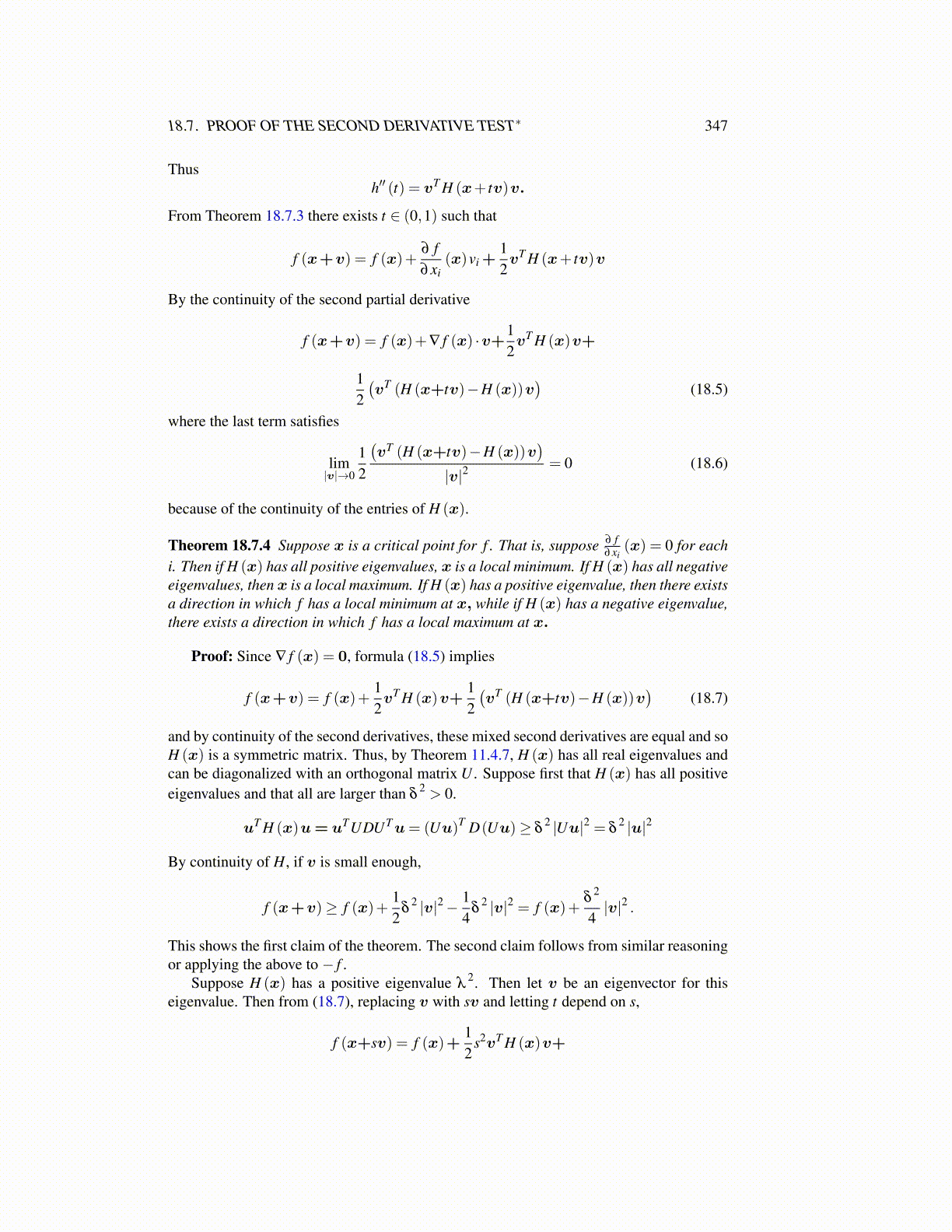
18.7. PROOF OF THE SECOND DERIVATIVE TEST∗ 347
Thush′′ (t) = vT H (x+ tv)v.
From Theorem 18.7.3 there exists t ∈ (0,1) such that
f (x+v) = f (x)+∂ f∂xi
(x)vi +12vT H (x+ tv)v
By the continuity of the second partial derivative
f (x+v) = f (x)+∇ f (x) ·v+12vT H (x)v+
12(vT (H (x+tv)−H (x))v
)(18.5)
where the last term satisfies
lim|v|→0
12
(vT (H (x+tv)−H (x))v
)|v|2
= 0 (18.6)
because of the continuity of the entries of H (x).
Theorem 18.7.4 Suppose x is a critical point for f . That is, suppose ∂ f∂xi
(x) = 0 for eachi. Then if H (x) has all positive eigenvalues, x is a local minimum. If H (x) has all negativeeigenvalues, then x is a local maximum. If H (x) has a positive eigenvalue, then there existsa direction in which f has a local minimum at x, while if H (x) has a negative eigenvalue,there exists a direction in which f has a local maximum at x.
Proof: Since ∇ f (x) = 0, formula (18.5) implies
f (x+v) = f (x)+12vT H (x)v+
12(vT (H (x+tv)−H (x))v
)(18.7)
and by continuity of the second derivatives, these mixed second derivatives are equal and soH (x) is a symmetric matrix. Thus, by Theorem 11.4.7, H (x) has all real eigenvalues andcan be diagonalized with an orthogonal matrix U . Suppose first that H (x) has all positiveeigenvalues and that all are larger than δ
2 > 0.
uT H (x)u= uTUDUTu= (Uu)T D(Uu)≥ δ2 |Uu|2 = δ
2 |u|2
By continuity of H, if v is small enough,
f (x+v)≥ f (x)+12
δ2 |v|2− 1
4δ
2 |v|2 = f (x)+δ
2
4|v|2 .
This shows the first claim of the theorem. The second claim follows from similar reasoningor applying the above to − f .
Suppose H (x) has a positive eigenvalue λ2. Then let v be an eigenvector for this
eigenvalue. Then from (18.7), replacing v with sv and letting t depend on s,
f (x+sv) = f (x)+12
s2vT H (x)v+